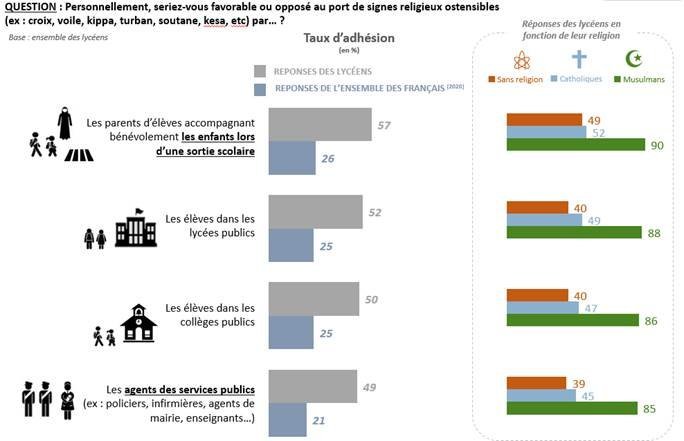Femicide: A Growing Global Crisis

Table of Contents
The Scope and Scale of Femicide
Understanding the true scope of femicide requires acknowledging the staggering statistics and the significant challenges in data collection. While precise global figures are difficult to obtain due to underreporting and inconsistent definitions across countries, the available data paints a disturbing picture. Many femicides are misclassified as suicides or accidents, further obscuring the true extent of this gender-based violence. Organizations like the United Nations and numerous NGOs are working tirelessly to improve data collection and reporting on femicide, but significant gaps remain.
- Regional Variations: Femicide rates vary dramatically across the globe. Latin America and the Caribbean consistently report some of the highest rates of femicide, while other regions also grapple with significant numbers, albeit with varying levels of reporting and awareness.
- Data Challenges: Accurately measuring femicide is hampered by several factors:
- Underreporting: Many cases of femicide go unreported due to fear, stigma, or lack of faith in law enforcement.
- Misclassifications: Deaths of women are sometimes misclassified as accidental or suicides, obscuring the true nature of the violence.
- Variations in Definitions: The definition of femicide itself can vary across countries, making international comparisons challenging.
- High-Risk Countries: Certain countries consistently appear in reports with alarmingly high rates of femicide. Researching these cases often reveals systemic issues related to gender inequality, weak law enforcement, and societal acceptance of violence against women.
Root Causes of Femicide
Femicide is not a random act of violence; it's a consequence of deeply ingrained societal structures and norms. Multiple factors contribute to this complex issue, often intertwined and reinforcing one another.
- Patriarchal Norms and Gender Inequality: Societies where men hold dominant positions and women are marginalized are more prone to femicide. Harmful gender stereotypes that portray women as subordinate and men as entitled contribute to a culture of violence.
- Misogyny and Toxic Masculinity: Misogyny, the hatred of women, and toxic masculinity, which promotes harmful norms of aggression and control, fuel violence against women. These ideologies normalize violence and create an environment where it's more likely to occur.
- Power Imbalances: Femicide is often driven by a desire to exert control and power over women. Perpetrators may kill women to silence them, punish them, or maintain control in relationships.
- Economic Inequality: Economic disparities can exacerbate gender-based violence. Women facing poverty and economic dependence may be more vulnerable to abuse and femicide.
- Lack of Legal Protection and Impunity: Weak legal frameworks, ineffective law enforcement, and lack of accountability for perpetrators create an environment where femicide flourishes. Impunity emboldens perpetrators and sends a message that violence against women will not be punished.
- Cultural Factors: Certain cultural practices and traditions, though not always directly causing femicide, can normalize violence and contribute to a climate of acceptance. These often require careful and nuanced approaches to address them.
The Impact of Femicide on Families and Communities
Femicide leaves a devastating trail of destruction, affecting not only the immediate family but entire communities. The consequences extend far beyond the immediate loss of life.
- Psychological Trauma: Survivors, including children, experience profound and long-lasting psychological trauma. Witnessing violence or losing a loved one to femicide can have devastating effects on mental health.
- Emotional Distress: The emotional toll on families and communities is immense. Grief, anger, fear, and a sense of injustice are common reactions.
- Social Disruption: The loss of women in communities disrupts social structures and impacts various aspects of life, from family dynamics to economic stability.
- Economic Burden: Families often face significant financial hardship due to the loss of income and the costs associated with funerals, legal processes, and therapy. The loss of a woman's contributions to household income and community life also has long-term economic consequences.
Strategies for Combating Femicide
Combating femicide requires a multi-pronged approach that addresses the root causes, supports survivors, and holds perpetrators accountable.
- Legal Reforms: Stronger laws that specifically address femicide, with harsher penalties for perpetrators, are crucial. This also includes improved legal aid and protection for victims.
- Law Enforcement Response: Law enforcement agencies require specialized training to investigate and prosecute cases of femicide effectively. This includes sensitivity training and awareness of the specific dynamics of gender-based violence.
- Victim Support Services: Accessible and comprehensive support services, including shelters, counseling, and legal aid, are essential for victims and survivors of violence.
- Educational Initiatives: Comprehensive education programs aimed at challenging patriarchal norms, promoting gender equality, and preventing violence are critical. These programs should target all segments of society, including men and boys.
- Community Engagement: Community-based initiatives that promote gender equality, challenge harmful norms, and support survivors are essential.
- International Cooperation: International collaboration is necessary to share best practices, improve data collection, and coordinate efforts to address this global crisis.
Conclusion
Femicide is a pervasive global crisis demanding immediate and sustained action. Addressing this issue requires a multi-pronged approach that tackles its root causes, provides support for survivors, and holds perpetrators accountable. We must work together to end femicide. By raising awareness, advocating for policy changes, and supporting organizations dedicated to combating violence against women, we can create a safer and more equitable world for all. Join the fight against femicide today and demand an end to this devastating global crisis. Let's work towards a future free from gender-based violence and create a world where every woman can live safely and with dignity.

Featured Posts
-
 Clisson Debat Sur Le Port De Symboles Religieux Au College
May 21, 2025
Clisson Debat Sur Le Port De Symboles Religieux Au College
May 21, 2025 -
 Cultivating Resilience Protecting Your Mental Health
May 21, 2025
Cultivating Resilience Protecting Your Mental Health
May 21, 2025 -
 Flavio Cobollis Triumph Bucharest Tiriac Open Victory
May 21, 2025
Flavio Cobollis Triumph Bucharest Tiriac Open Victory
May 21, 2025 -
 Mummy Pigs Grand Gender Reveal At A Famous London Spot
May 21, 2025
Mummy Pigs Grand Gender Reveal At A Famous London Spot
May 21, 2025 -
 Trans Australia Run A Record Breaking Attempt
May 21, 2025
Trans Australia Run A Record Breaking Attempt
May 21, 2025
Latest Posts
-
 Borussia Dortmund Wins Big Beiers Two Goals Secure Victory Over Mainz
May 21, 2025
Borussia Dortmund Wins Big Beiers Two Goals Secure Victory Over Mainz
May 21, 2025 -
 Bangladeshinfo Com Your Gateway To Understanding Bangladesh
May 21, 2025
Bangladeshinfo Com Your Gateway To Understanding Bangladesh
May 21, 2025 -
 Maximilian Beiers Brace Leads Borussia Dortmund To Victory Against Mainz
May 21, 2025
Maximilian Beiers Brace Leads Borussia Dortmund To Victory Against Mainz
May 21, 2025 -
 Kane Absence Adds To Bayerns Bundesliga Frustration Following Leverkusen Defeat
May 21, 2025
Kane Absence Adds To Bayerns Bundesliga Frustration Following Leverkusen Defeat
May 21, 2025 -
 Bayern Munichs Bundesliga Celebrations On Hold After Leverkusen Upset
May 21, 2025
Bayern Munichs Bundesliga Celebrations On Hold After Leverkusen Upset
May 21, 2025
